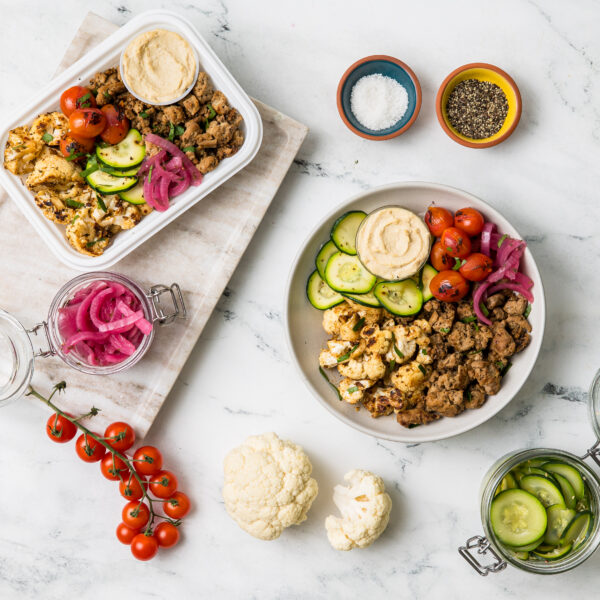A vibrant addition to any meal and a favorite for rabbits, carrots are great for any well-balanced and healthy diet. With International Carrot Day coming up, it’s the perfect time to appreciate this ancient and wholly underappreciated vegetable.
Started in 2003, April 4th is now International Carrot Day. And today, on the blog, we’re talking all we can about this wonderful, nutritious veggie.
Carrots: A Brief History
First, where did carrots originate from and how do we cultivate them today?
The first trace of carrots emerged in Central Asia, the area that is now Iran and Afghanistan, around 900 CE. The original carrots were purple or yellow in color. Over time and with domestication, carrots began to vary in color, including shades of yellow. As the veggie spread beyond Asia and the Mediterranea, it grew more and more diverse, and developed antioxidants called carotenoids. These carotenoids are what give carrots their signature bright orange hue that they have today.
Now, carrots are everywhere. In fact, they’re so common that they’re officially the second most popular veggie—right after potatoes. Globally, over 6 million tons of carrots are harvested annually. Now that’s a lot of carrots!
As commonplace as carrots are in our everyday lives, it’s good to stop and appreciate the many health benefits that carrots give us—beyond just improving and maintaining 20/20 vision. Carrots can be a nutritious part of almost any diet.
The Many Health Benefits of Carrots
Carrots certainly pack a healthy punch. For one, carrots are low on the glycemic index, with a score of16-60, depending on the type of carrots. While this doesn’t mean they’re low carb, it means that many carrots elicit a relatively low blood sugar response.
As such, they may be a great option for those with diabetes, or those with blood sugar dysregulation. Since carrots do contain carbs and sugar, we always recommend pairing them with a balanced meal that contains protein and fat. If you’re having carrots as a snack, pair them with a fat source like guacamole or almond butter (just trust us!) to slow digestion and keep blood sugar stable.
Thanks to their antioxidant content, carrots are anti-inflammatory, and they may also improve digestive health and help with weight management. Together, all of these benefits work to reduce the risk of cancer, and even lower cholesterol.
What is the Nutritional Value of Carrots?
Since carrots have lots of benefits, including high fiber content, they’re the perfect addition to any diet.
Here’s the scoop:
- Carrots are only about 40 calories per 100 grams, raw.
- Carrots are made up of about 85% water.
- The remaining 15% is carbs—mainly fiber.
- Carrots are vitamin-rich, containing:
-
- Vitamin A
- Vitamin K
- Vitamins B6
- Vitamin C
- Biotin
Let’s break these nutrients down a little further:
- The carrot is most famous for its vitamin A content. Carrots are rich in beta and alpha-carotene—which the body then breaks down into vitamin A. Our bodies are so smart, too. Our bodies convert and process vitamin A differently, depending on how the carrots are prepared. For example, the process of commercially pureeing carrots makes vitamin A more bioavailable compared to carrots that are boiled or mashed at home. Regardless of the prep method, the vitamin A we get from carrots is essential for skin and eye health.
- The vitamin K (potassium) found in carrots means that they’re amazing for bone health, improving bone density, and injury recovery (via blood clotting).
- Biotin, a B vitamin, is involved in a variety of bodily processes, including maintaining healthy skin, hair, and nails. . Carrots also contain another B vitamin, vitamin B6.
- The vitamin C found in carrots is essential for boosting the immune system and maintaining optimal collagen levels for joint and tissue health.
- Carrots have an abundance of pectin, a soluble fiber, which helps slow down digestion and may help you avoid a blood sugar spike from carbohydrate-containing foods (like carrots!). Since fiber slows digestion, it also helps keep you full for longer between meals.
- The insoluble fiber in carrots may help to improve digestive health. In a study in which participants ate 200 grams of raw carrots every morning for three weeks, scientists discovered that there were small but clear improvements in gut flora and bowel health.
All About Multi-Colored Carrots
Carrots are known for being bright orange, but they come in several colors, including purple, pale ivory, yellow, and red.
Why do they come in so many colors? Well, it’s not just for show, we can tell you that much. Their color variations are simply due to varying levels of antioxidants. Over time, mixing carrots created different gene expressions of carotenoids (of which the carrot has over 500 types)—antioxidants that the liver converts into vitamin A.
While beneficial for digestion, the purpose of carotenoids for plants is to create pigment/color by way of photosynthesis. So, the more pigment-providing carotenoids that a carrot has, the richer its color.
What makes carrots orange?
Orange carrots are highest in beta-carotene, and also contain a bit of alpha-carotene, gamma carotene, and other antioxidants.
What is the difference between each color?
Before carrots were orange, they were everything else. Yes, seriously!
- Red carrots are slightly sweeter than orange, and they include more of a particular antioxidant called lycopene, as well as more lutein.
- Yellow carrots have the most lutein, as well as some zeaxanthin, and were the original carrot of Europe before orange became the dominant color.
- Purple carrots are known for their high levels of anthocyanins, a specific flavonoid that occurs in blue, purple, and red pigments. What’s even cooler about the purple carrot is that the inside of a purple carrot can vary in color, ranging from purple, red, orange, or white.
- White carrots lack any carotenoids that create color or pigment in the vegetable.
But not to worry, no matter what color the carrot is, all carrots generally carry the same nutritional value.
How to Add Carrots to your Healthy Diet
Sometimes, even if you know carrots and other veggies are great for you, they can be hard to incorporate into your diet. That’s where we come in! Here at Snap Kitchen, we’ve got you covered with a collection of delicious carrot-containing meals.
Almond Crusted Salmon
This paleo-friendly, Whole30 Approved meal is a customer favorite, and with one taste it’s clear why! Our salmon is coated in heart-healthy almonds and cooked to perfection, then paired with carrots and zucchini for a delicious, nutrient-dense meal.
Miso Glazed Salmon
Buttery Atlantic salmon is marinated in our chickpea miso glaze, then paired with teriyaki carrots and sesame broccoli. Soy-free and flavorful, filled with the nutrients you need to feel your best.
Korean BBQ Meatballs
This dish combines the aromatic flavor of BBQ-drenched meatballs with the tang of kimchi-flavored carrots and sesame broccoli, all on a bed of basmati rice.
Naked Salmon
This meal has been a mainstay of our menu for years! This simple yet delicious dish pairs salmon with house-made dill ghee, peas, and carrots. It’s the perfect balance of flavors, colors, and nutrients.
Building a nourishing meal is all about balance! Consider ample veggies, protein, and healthy fats as the foundation of your plate. And if sometimes it feels like too much to handle, that’s where we come in.





Leave a Reply
No Comments